|
FIELD NOTE:
|
| PLACE: |
CORREGIDOR |
DATE: |
23 AUGUST 2009 |
| LOCALE: |
MIDPOINT BTRY SMITH
& BTRY HEARN |
| OBSERVATION: |
G1 COMMAND POST |
| BY: |
JOHN MOFFITT |
| |
REF: FOTS2/090823 |
On Corregidor maps
there is a structure labeled ‘G1’ with the official designation of ‘Gun
Group Command Post #1’. It is located between Batteries Smith and Hearn.
After taking some GPS waypoints for mapmaster at Battery Grubbs I decided to
head over there and check it out.
This area always seemed like a no-mans land to me as from the side of the
roads, all you see is thick vegetation in there. Not a fun place to travel
at all. However it is deceiving like many places on the island. The sides of
the roads and trails are quite open so plants grow thick. Once you get past
them into the canopy, the plants fade away and walking is actually not too
bad.
To make it even easier, I walked on the old trail to the eastern entrance of
the Battery Smith Tunnel. Here I set the GPS to show me the straight line
direction to Battery Hearn. From the tunnel entrance to the Battery Hearn
gun, it is 239 metres so not far at all.
The terrain is slightly hilly with a downward slope towards the right. I saw
small hills, craters and traces of old roads. In only a few minutes I could
see what looked like a black tunnel entrance in a small hill slightly off to
one side. This turned out to be a battle damage hole in the side of a soil,
grass and tree covered structure.
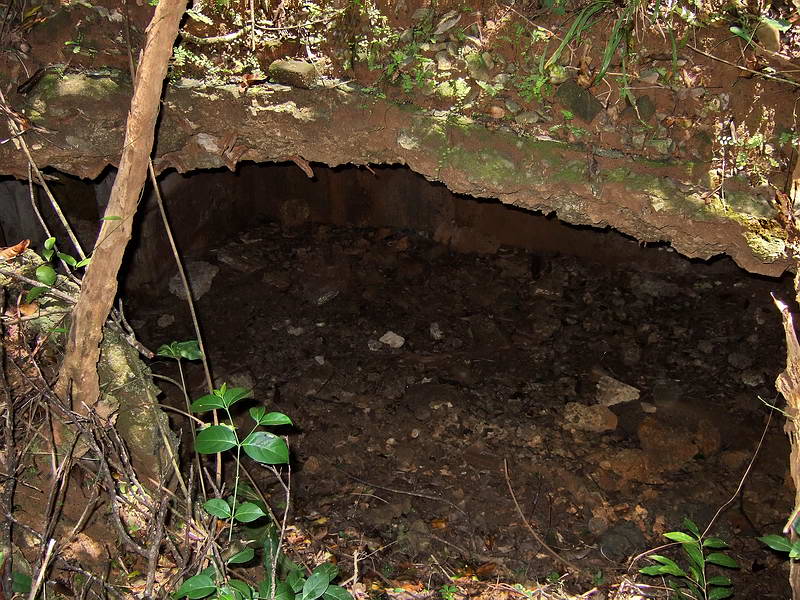
Large hole in the
front side wall.
On looking inside
the hole, I saw lots of similarities with C1 so I knew I had found G1. I
could see the hexagonal platform for the range and direction finding
equipment however the roof has partially collapsed closing the narrow front
viewing area.
I will try to explain what I mean by the “narrow front viewing area”. Below
is a photo of the upper section of the C1 Command Post near Battery Wheeler.
G1 probably looked like this in better days. Notice the narrow viewing area
which is on the front and both sides. Metal bars at the corners support the
reinforced concrete roof above the lower walls. These bars are positioned on
an angle so that they present the least profile as possible that would block
the view of the range and direction finding equipment located inside.
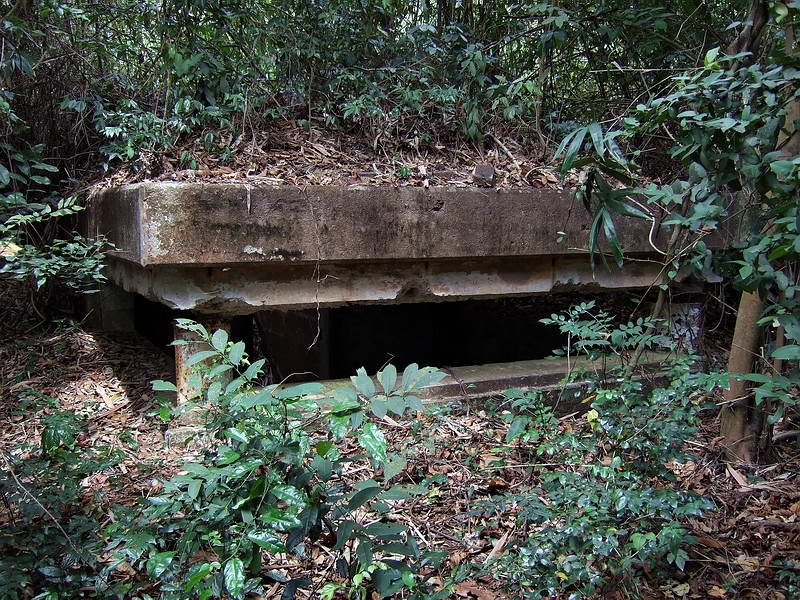
Below is a better view of C1 showing one of the angled metal bars and the
hexagon shaped range and direction finding pedestal on the inside floor.
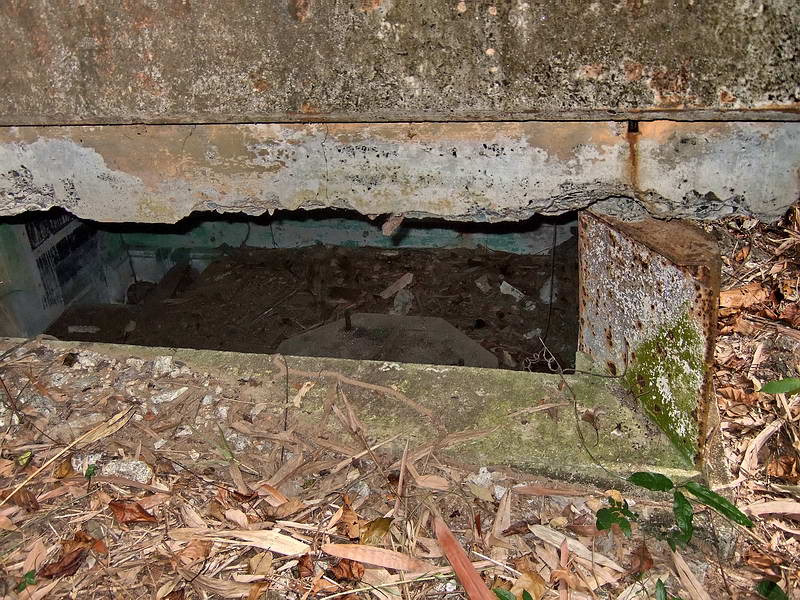
I mention this
because in G1, the roof is partially collapsed towards the front. Both front
corners including the metal bars are missing so the main supports for the
roof are gone. To me it looks like this was caused by battle damage.
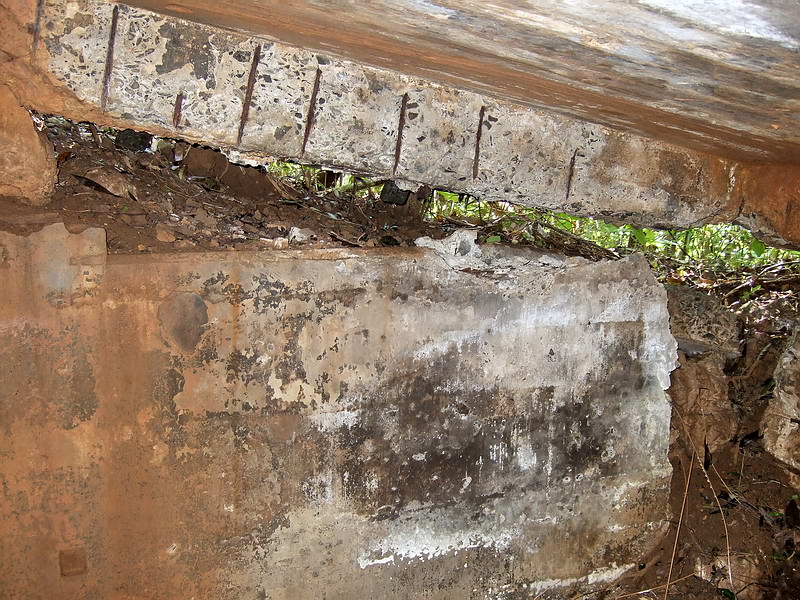
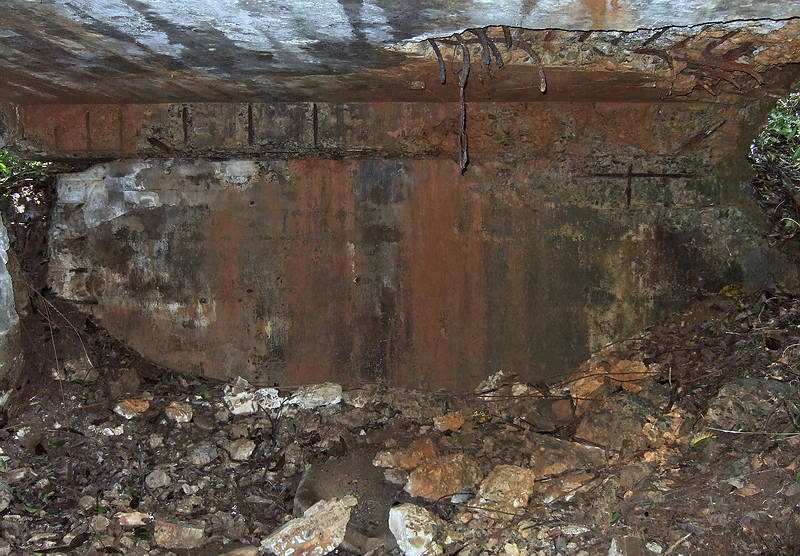
Looking towards the collapsed front. The front left corner is severely
damaged and to the right, the whole corner and a section of the wall is
missing. This is the larger hole from which I entered the room. Also, note
the hexagon shaped pedestal on the floor.
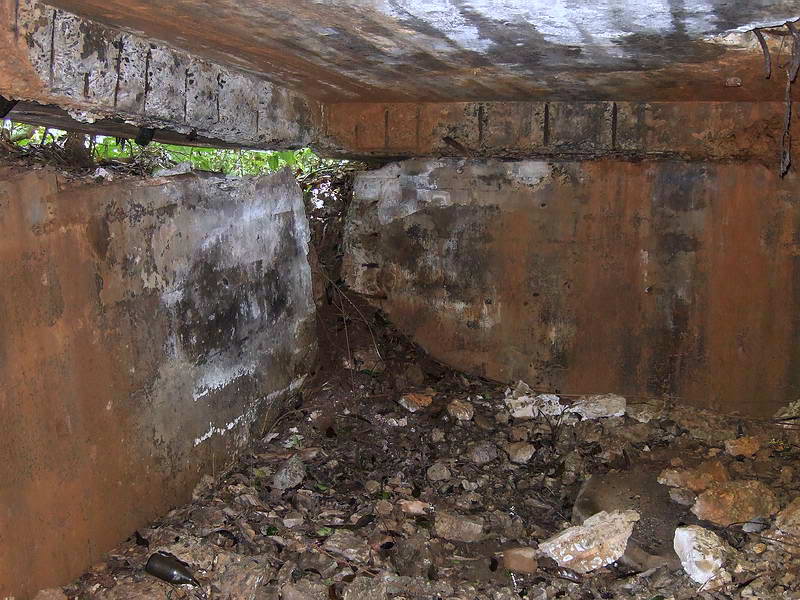
Front left corner.
To the rear of the
main room is a doorway going to the communications area which had three
‘telephone booths’ on each side.
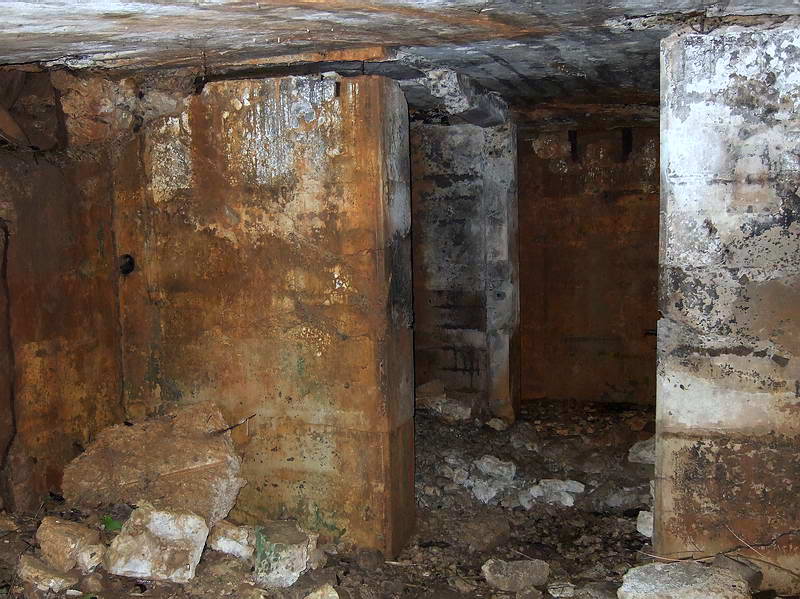
Doorway at the rear of the main room.
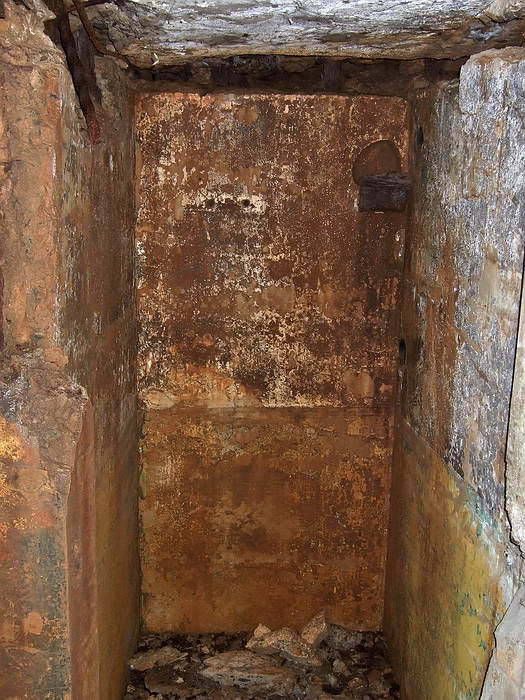
Telephone booths. Cable and power conduits can be seen to the rear of the
right side wall.
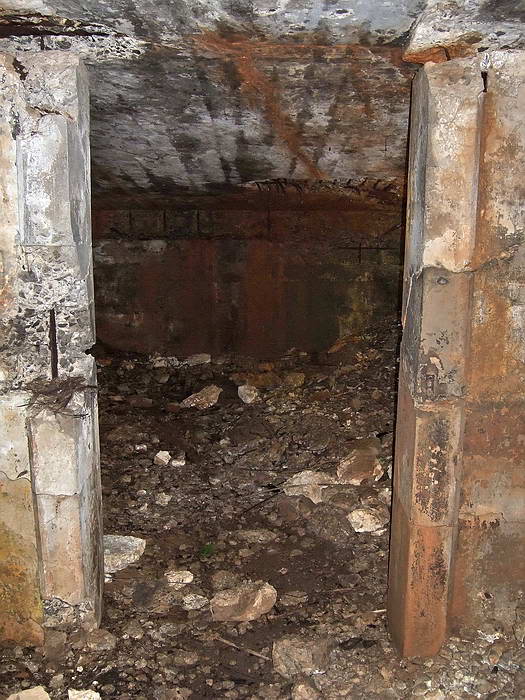
View from the comms area out into the main room.
I was taking photos
when I finally realized “Hey, where is the outside door?” I had entered
through the hole in front the side wall. C1 has a doorway and steps up to
ground level at the rear of the telephone booths but this Command Post did
not. Past the telephone booths I got a surprise. At the rear wall on the
left hand side was a set of steps down to a second level. I love exploring.
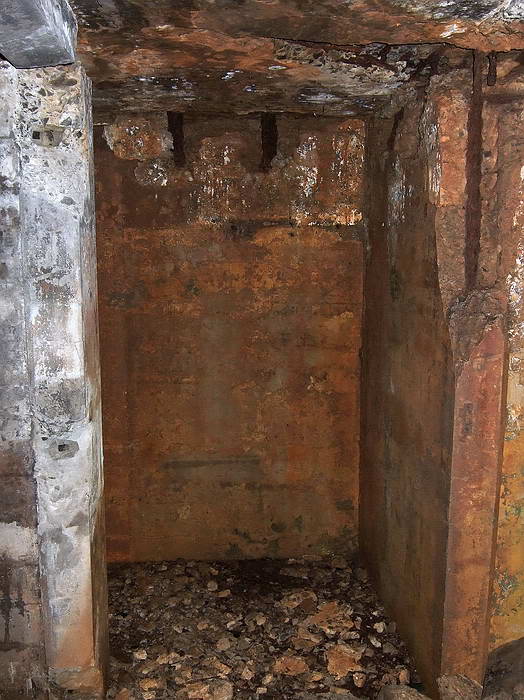
View of the rear wall with telephone booths on each side. Steps head down
to the left.
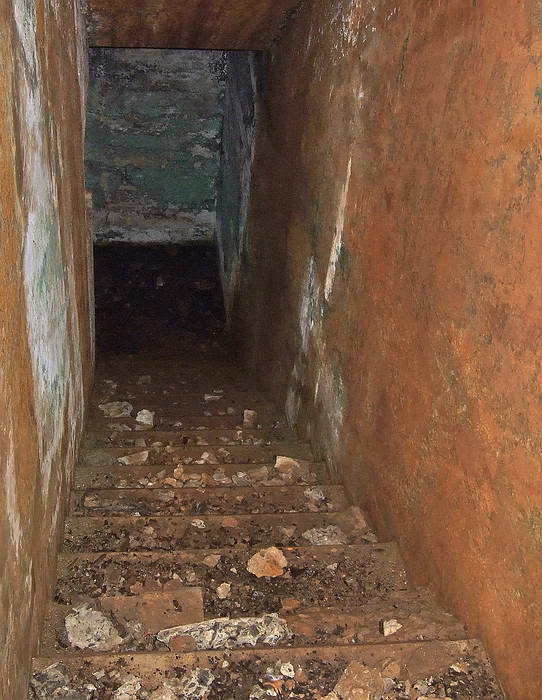
Looking down the steps. A green painted square area at the bottom leads
to a rectangular room to the left.
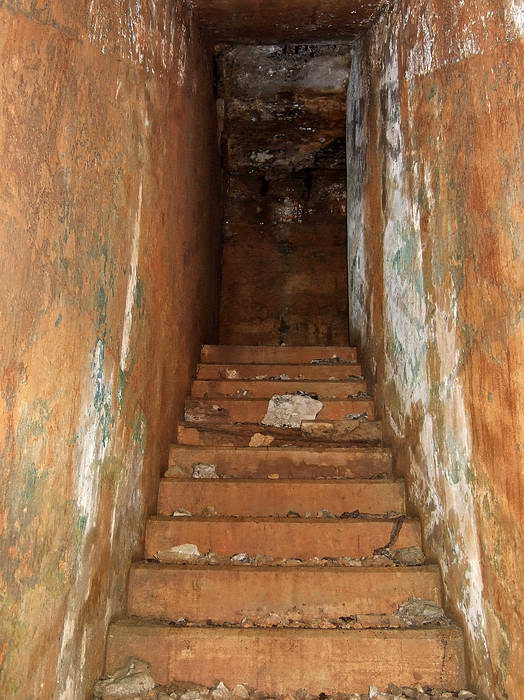
Looking back up the stairs.
I headed down the
stairs. As usual, the lizards were not happy to have a guest. The largest
ones are about 8 inches to a foot long but I don’t think they are dangerous.
They just scurry along the upper walls or ceilings ahead of you. If you get
close to them such as pass through a doorway that they are near, they start
dropping from the ceiling and run away on the floor.
Two years ago in the pitch blackness, I had a small one land on the back of
my neck before he jumped off. I d**n near had a heart attack. Occupational
hazards I guess.
At the bottom of the stairs you turn left into a square room. It is totally
empty except for concrete fragments and some miscellaneous junk on the
floor. The ceiling looks like the scrappers spent considerable time here.
Another thing I noticed is all the bullet holes in one corner. I wonder what
happened here to provoke this many years ago.
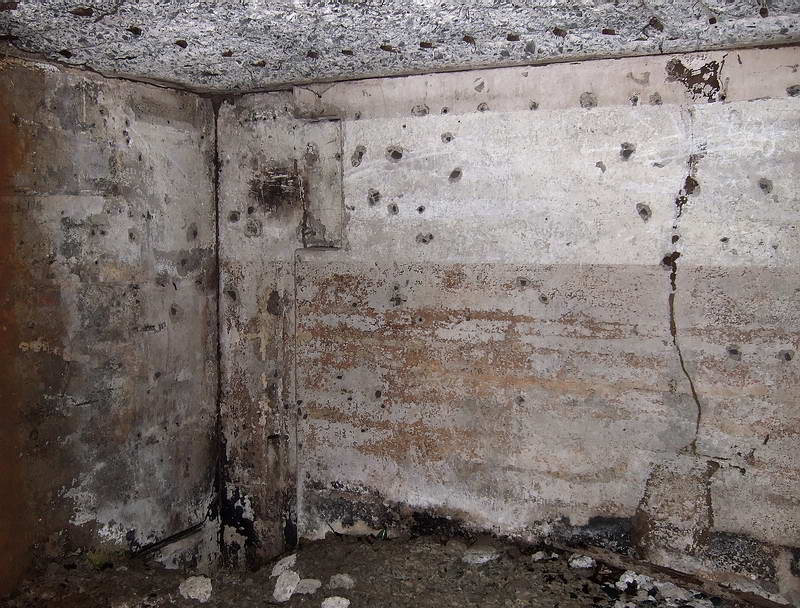
As you enter this
room, you see another doorway to the right. When I take photos in tunnels or
zero light rooms, I turn off my flashlight so as not to get a white spot in
the photos. At this time I noticed a faint glow coming from the second
doorway so I knew there was an outside opening not far too away.
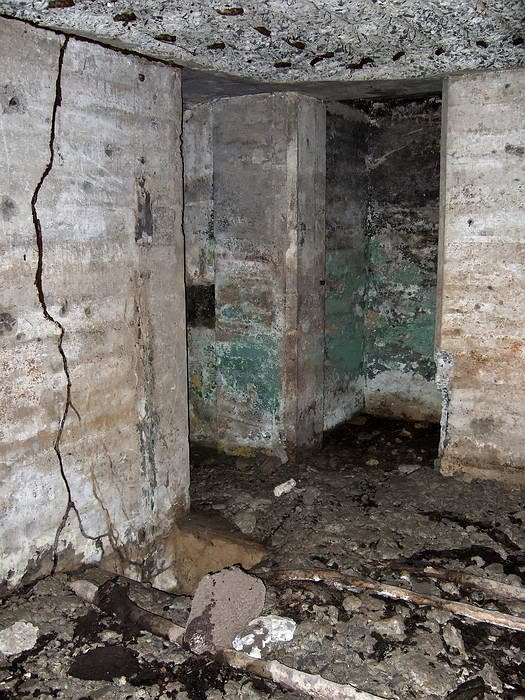
The doorway to the right comes from the upper level.
Finishing my photos in the room, I went through the doorway to the left.
Within six feet or so it turns to the right and you see a long set of steps
up to the surface.
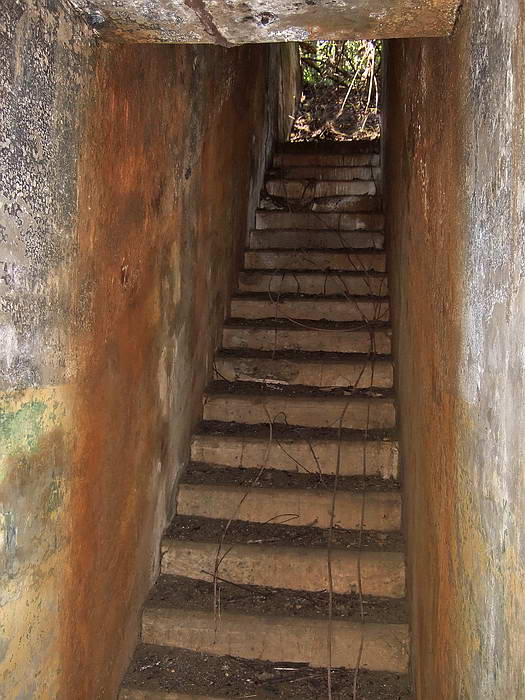
Looking up the steps. They are steeper than this view indicates.
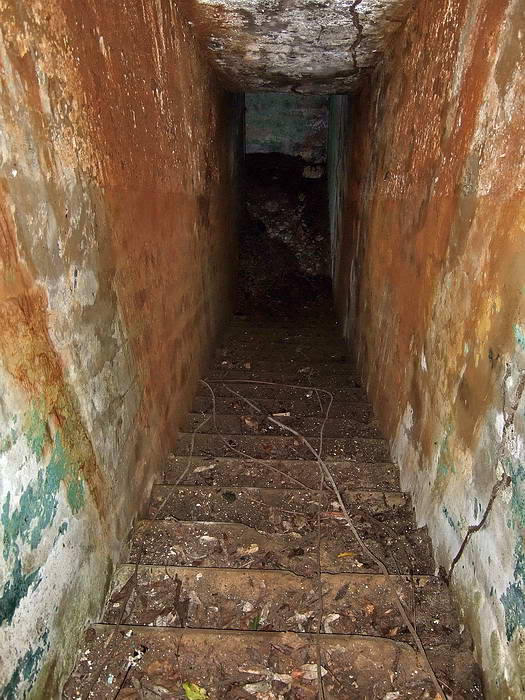
Looking down the steps.
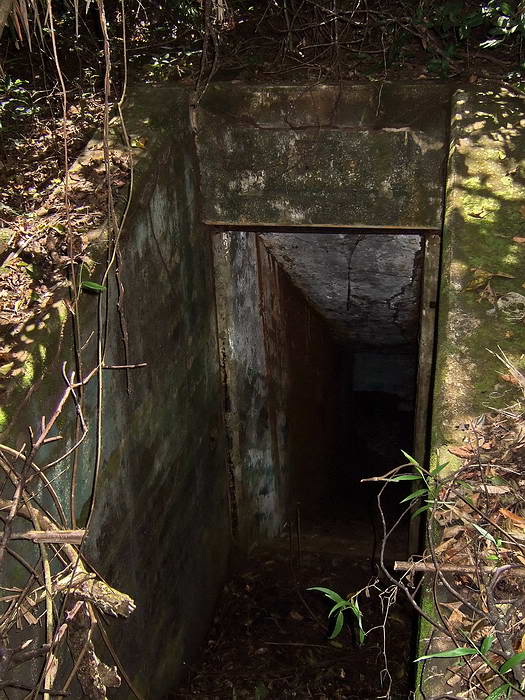
Command Post outside entrance.
This Command Post had no vertical air vent up to the surface but perhaps it
was not needed. The upper level was open at the front and the lower level
had the staircase at the rear.
I don’t think this place gets many visitors. I cleared the entrance a bit
more, took some photos and continued on to Battery Hearn.
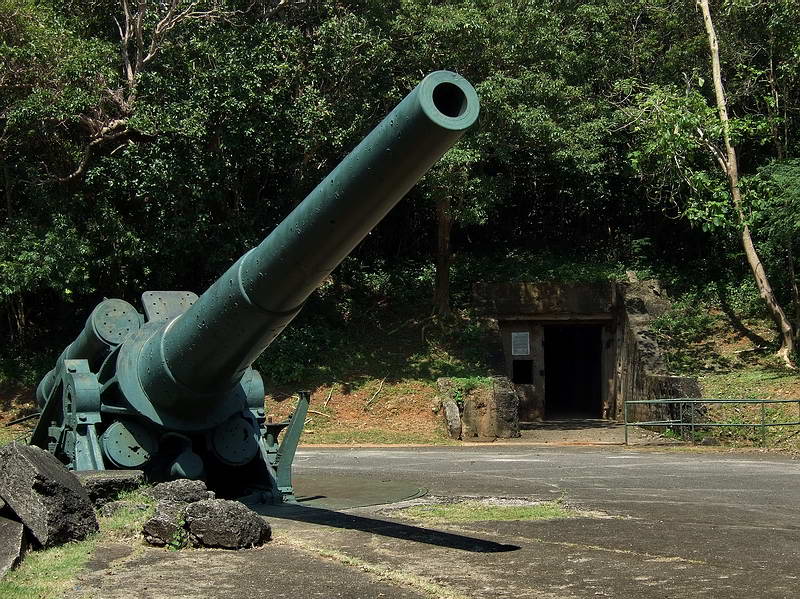
View of Battery Hearn with the magazine at the rear.
Since I had a two or
three hours left before heading back to the hotel, I decided to do a
detailed exploration of the Mile Long Barracks. I walked through all rooms
in all three floors (where you can walk all three floors). It was not overly
interesting but now I know that for sure.
SEE FEATURE ARTICLE ON THIS TOPIC
FOOTNOTE 1:
Gun Group Command Posts such as G1 and their individual battery control
equivalents all have hexagon shaped concrete pedestals where range finding
and azimuth equipment would be mounted.
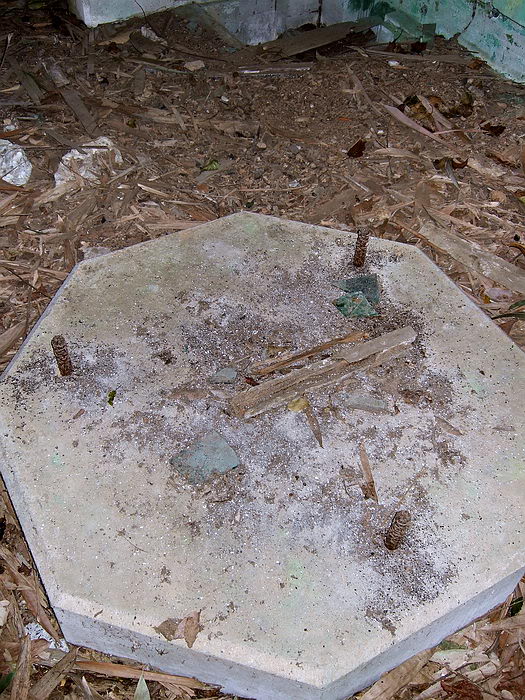
FYI, here is a sample of what some of what similar equipment looks like:

Range Finder on the left and Azimuth Scope on the right.
(photo from CDSG web site)
FOOTNOTE 2
How Corregidor was “wired” so to speak is something I know nothing about.
Your possibilities are all feasible depending on how much of a hurry they
were in at the time.
All I can say is that I have seen lots of rectangular cable boxes in the
ground with round conduit holes on two or all four sides. These cable boxes
can be from a couple feet square to one I know of that is about twenty feet
deep.
I would expect the whole island had a fairly intricate network and was
certainly documented somewhere. There may be copies still existing but I
have not seen them.
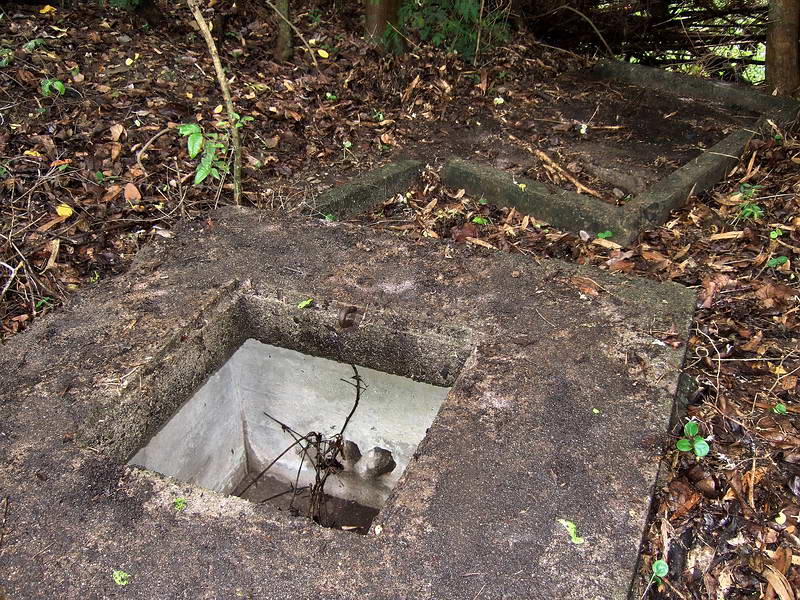
Here
is a small cable box still painted white with two conduits on each side.
|